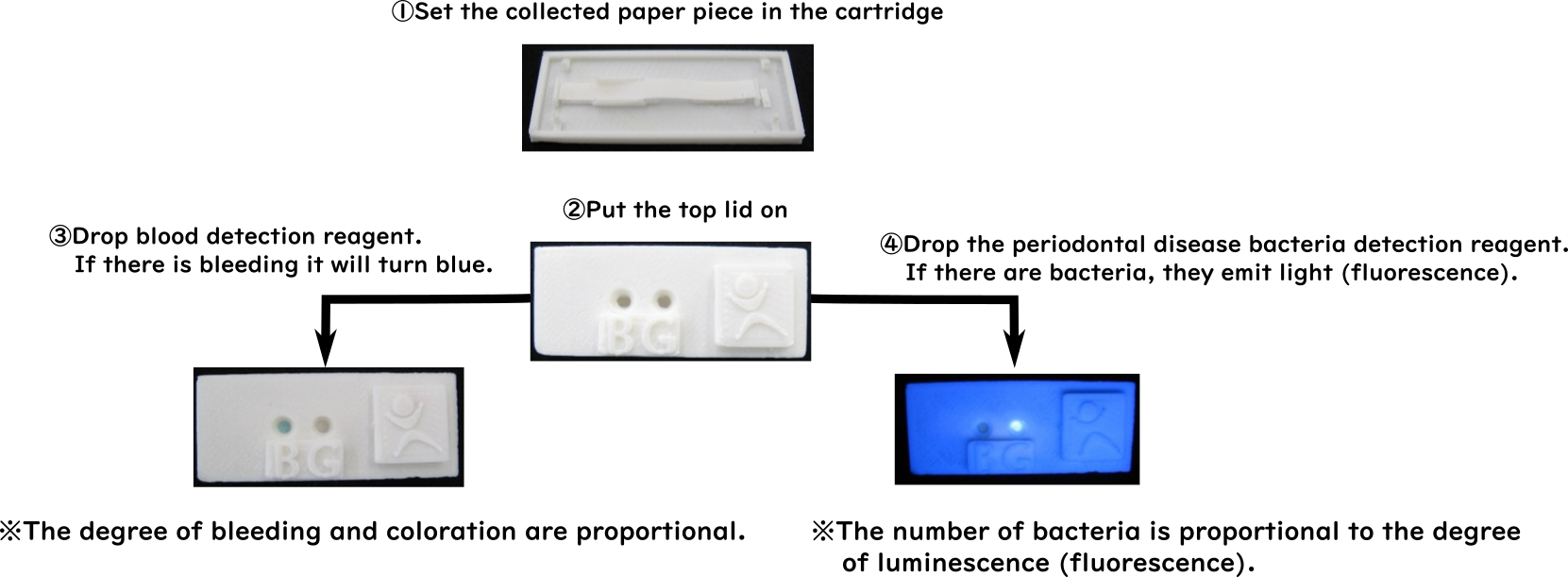Efforts for periodontal disease(2)
Overview
Periodontal disease refers to all diseases that occur in the periodontal tissue consisting of gingiva, cementum, periodontal ligament and alveolar bone.
Periodontal disease is an inflammatory disease caused by oral bacteria in plaque and is roughly divided into gingival inflammation and periodontitis.
About 70% of Japanese people have some kind of abnormality in their gums, and in middle-aged and older people who are in the prime of work,
80% of people have periodontal disease.
Recently, periodontal disease has been positioned as a lifestyle-related disease and is related to eating habits, tooth brushing habits,
somking, etc. It is important to understand that improving the lifestyle of individual patients and self-help efforts also play a major role
in the success or failure of periodontal disease treatment.
Inspection / diagnosis
Currently, dentists mainly perform the tests 1 to 3 to diagnose whether or not they have periodontal disease.
1 . Probing inspection
A probe is a needle-shaped metal device. In the probing test, a scaled probe is inserted into the gap between the teeth and gums to measure the depth.
2 . X-ray examination
As periodontal desease progresses, the bones that support the teeth may melt. An X-ray test can accurately determine the amount and range of melting of the bones that support the teeth.
3 . Inspection of plaque adhesion rate
The cause of periodontal disease is the adhesion and accumulation of plaque. You may want to use a stain to find out how much plque is on your teeth.
The part with plaque is dyed red.
4 . Other inspection
This is the test method that Caretis is working on.
① Our kit detected hemorrhage (color development) and number of periodontal disease bacteria (fluorescence) in gingvial exudate and saliva.
② . Cultivate periodontal disease bacteria in gingval exudate and saliva, and measure the number of bacteria.
 Periodontal disease bacteria colony
Periodontal disease bacteria colony
 Fluorescence detection
Fluorescence detection
of periodontal disease bacteria
Couses and symptoms
[Cause]
Periodontal disease is a disease in which plaque accumulates in the grooves of teeth and gums and causes inflammation due to
insufficient brushing, sugar and other excessive intake.
1 . Irregular eating habits
2 . Bruxism, clenching
3 . Dentures that do nat fit
4 . Smoking
5 . Stress
6 . It may be caused by systemic illnesses such as diabetes and hormonal abnormalities.
[Symptoms]
In periodontal disease, the gums are often red and swollen, but it is said that there is almost no pain. Periodontal disease is easy
to progress without being noticed because there is almost no pain. As periodontal disease progresses, the foundation that supports
the teeth melts and may require tooth extraction. Symptoms that can occur with periodontal disease include the following.
• Sticky feeling of the mouth when waking up
• Bleeding from gums when brushing teeth
• Itchy gums
• Gums are red and swollen
• Difficult to chew hard objects
• Feels like your teeth are getting longer
• There is a gap between the teeth
Prevention
Prevention of periodontal disease includes proper brushing, lifestyle changes, and regular dental diagnosis.
1 . Periodontal care (correct toothbrushing)
2 . Review of lifestyle
It is said that periodontal disease, which is a bacterial infection, is more likely to develop when the immune system
is weakened due to a disorder of lifestyle. You should try to
quit smoking, save alcohol, have a well-balanced diet, get enough sleep, and exercise moderately.
3 . Regualr dental examination
Understanding the condition of your teeth through regular dental examinations will help prevent periodontal disease. Periodontal
disease may develop even if it dose not look abnormal, so it is a good idea to have a doctor check it before it progresses.
When plaque becomes hard and become a condition called tartar, it is diffcult to remove it by yourself. Visit your health care
provider on a reguar basis to have your tartar checked and removed.
Treatment
Treatments for periodontal disease include basic treatment and surgical treatment. The basic treatment for periodontal disease includes removing plaque and
tartar that cause periodontal disease, and adjusting the gathering of loosely moving teeth. Remove plaque is important for proper brushing at home.
If the basic treatment improves the depth of the gap between the teeth and gums, we will move to regular dental examinations. Surgical treatment may reduce
the depth of the gap between the teeth and gums or regenerate the melted and lost bone if the basic treatment dose not improve it.
For the all above, we referred to Medical Note (http://medicalnote.jp). Please see the page as well.
Caretis is interesting the following treatments:We plan to provide topics irregularly.
(1)Chinese medicine
Typical Chinese herbal medicines given in dentistry
①Rikkousan:Toothache, pain after tooth extraction
②Hangeshashintou:Stomatitis (mouse ulcer)
③Ouren gedokutou:Stomatitis (mouse ulcer)
④Inchinkotou:Stomatitis (mouse ulcer)
⑤Goreisan:Dry mouth (xerostomia)
⑥Byakkoka ninjintou:Dry mouth (xerostomia)
⑦Hainousankyutou:Periodontitis
For this item, we refered "theme park 8020"(https://www.jda.or.jp/park/trouble/kanpou.html).
(2)Calculus removal assistance and plaque expansion suppression
We have begun to work on the development of useful methods, including evaluation methods.



 Periodontal disease bacteria colony
Periodontal disease bacteria colony
 Fluorescence detection
Fluorescence detection